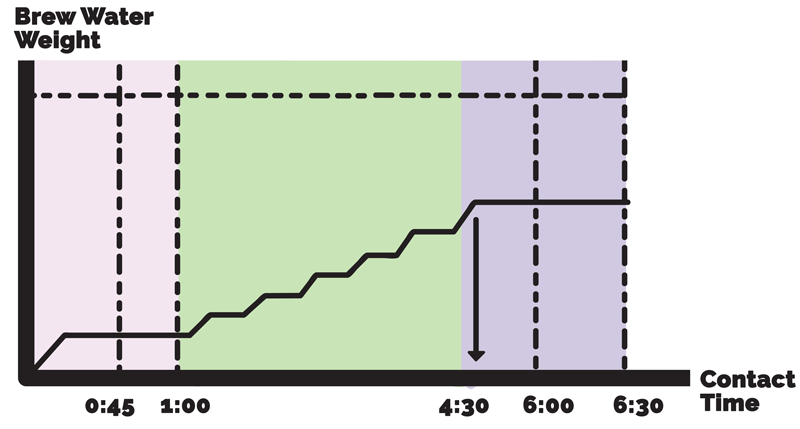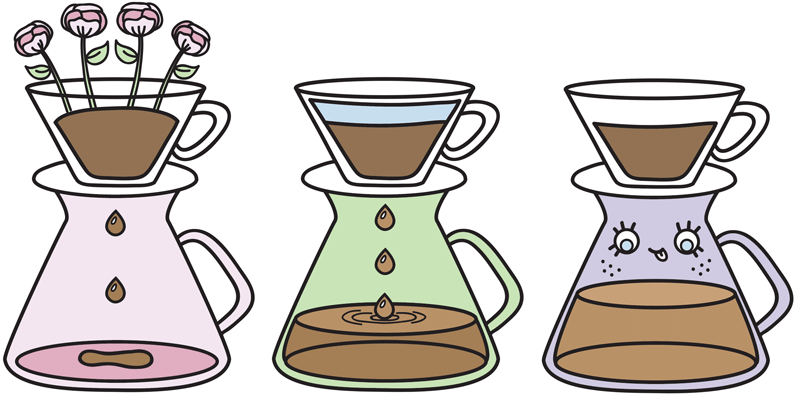A Scott Rao Case Study
Scott Rao, the world’s preeminent coffee educator, authored Everything but Espresso, the influential book on filter coffee.
When you are programming your batch brewer or just planning your pour-over routine, thinking about the brew cycle in three phases will help you get more consistency. This mirrors very closely the way coffee roasters organise their roasting processes. If you are familiar with roasting coffee, you will know roasters are particularly focussed on tracking key moments in the roast such as when first crack occurs (when the beans rapidly expand, a bit like popcorn kernels popping).
In brewing, the moment that signals the start of the final phase of brewing is the beginning of the drawdown phase. This is the moment after you have (or your mechanical brewer has) finished adding all the water to the slurry. When Scott Rao teaches brewing, for all batch brew sizes, he recommends a total contact time of between 6:00 and 6:30 minutes:seconds. And when he is planning his total delivery time, he programmes his brewer to finish dispensing all the water after 4:30 minutes:seconds. If your batch brewer allows you to select the number of pulses, we recommend a minimum of six pulses.
To give you a visual reference for these time targets, we have created a chart that plots the key turning points in the flow profile. This chart (below) illustrates the three key phases with the tolerances Scott uses between the end of the blooming phase from 45-60 seconds. It also indicates the 30 seconds margin of error at the end of the drawdown between 6 minutes and 6:30 that he recommends.

Illustration: A Graph Showing a delivery time profile based on Scott Rao’s preferences for batch brewing. The chart is colour coded to show blooming on the left up until 1 minute. Then Dilution phase up until 4:30, then drawdown from 4:30 to the end.
